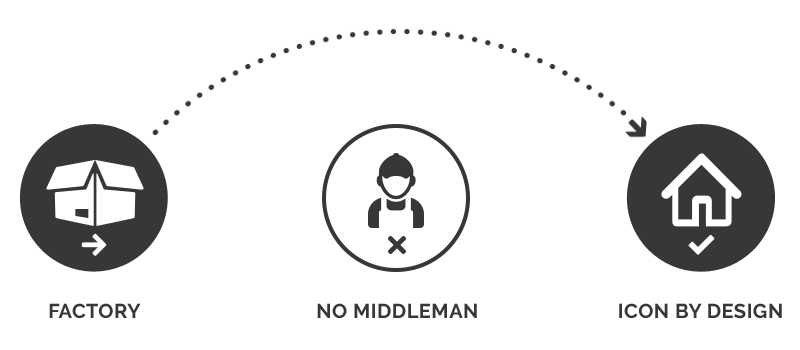Icons of Design: Philippe Starck

One of the most prolific designers of our time, Philippe Stark’s portfolio ranges from nightclubs, to lemon squeezers – and just about everything in-between. Known as the “bad boy of design”, he is credited with bringing good design to the masses; changing people’s perception that “good design is only for the wealthy, or an extravagance.” A man of principle, his serious musings on design philosophies are juxtaposed by his creations, which are often witty and playful reinterpretations of familiar objects. In this article, we’ll take a look at how Starck managed to make design approachable and affordable, and what he sees as the purpose of a designer in today’s world.
Starck’s passion for design was ignited from an early age. The son of an aerospace engineer, his childhood was spent with his father in his workshop – pulling apart engines, and putting them back together in his own unique way. A social outcast at school because of his shy and introverted nature, design was Starck’s way of escaping – disappearing into his own creative world. His combination of raw talent and enthusiastic work ethic won him a place at the prestigious Ecole Nissim de Camondo in Paris.
![]()
Starting off in Paris, Starck began his career by starting a company that specialised in designing inflatable furniture. While the products themselves were a moderate success, it was this playful approach to design that put Starck on the radar. Within a few years, he was being commissioned to lead the redesign of a number of leading Paris nightclubs. Modelling himself on Andy Warhol, Starck believed that “the design industry could use a good hit of the same irony”, and so, in 1979, he founded Starck Products.
Characterised by smooth natural lines, and tongue-in-cheek personality, Starck Products’ modus operandi was to make good design affordable: “good design can and should be a part of everyday life.” This populist vision for industrial design was achieved through partnering with low-cost manufacturers; selling designs at affordable price points at mass-market venues. The list of collaborations is varied and endless: the Juicy Salif juicer for Alessi, the Louis Ghost Chair for Kartell, the Gun Lamp for Flos, homewares for Target, luggage for Samsonite, televisions, toothbrushes, even an Optical Mouse for Microsoft. Using his “bad boy image” to his advantage, he promoted himself and his designs in the mass media – previously a form of marketing reviled by designers. Suddenly, Starck was everywhere. For twenty years, he rarely turned down a commission or collaboration; spreading his designs world-wide in the form of products, architecture, interiors, even boats.
The Juicy Salif juicer, Philippe Stark for Alessi
Having shown the world that good design was attainable and affordable to everyone, Starck’s mission in recent years has shifted: “I’ve spent years doing democratic design, raising the quality and killing the price… It’s done. We’ve won the battle.” These days, Starck is careful about only collaborating with companies who adhere to his ethical beliefs, and tunes his designs to reflect a pressing ecological need: material waste. He argues that every designer today has a duty to design something timeless; not just to raise their profile, but to be active in rejecting the disposable society of today.
“Timeless is the only way that is ecological. We don’t need recycling if we just buy less. If we are obliged to buy something, we have to buy something intelligent, which has longevity, so that you don’t put it in the trash five years later because it is no longer a good look. And it must also have longevity of materiality because five years later if you still like the look, but the quality was bad, it goes in the trash.”
Philippe Starck has been one of Icon By Design’s personal idols since our foundation. We fully support Starck’s responsible design philosophy; our products reflect a timelessness that allows them to be used and enjoyed for decades, and are made from sustainably-sourced solid timbers and produced by craftsmen using traditional carpentry techniques. By cutting out the middlemen and sourcing direct, we’ve managed to halve the price of solid timber furniture for our customers – allowing everyone to be able to afford beautiful, well-made design in their homes.
Recent Posts
-
1
-
2
-
3
-
4
-
5
-
6
-
7
-
8
-
9
-
10






 1300 715 719
1300 715 719 Showrooms
Showrooms





















